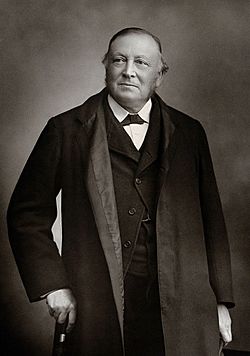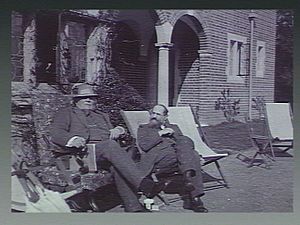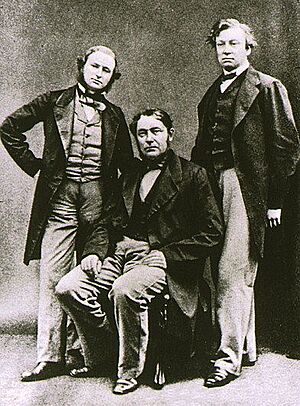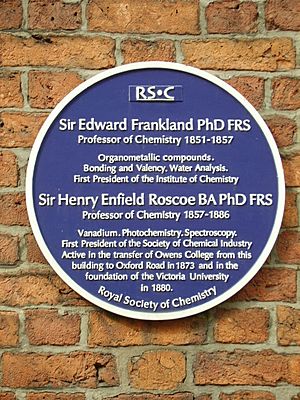Henry Roscoe (chemist) facts for kids
Quick facts for kids
Henry Enfield Roscoe
|
|
|---|---|
 |
|
| Born | 7 January 1833 London, England
|
| Died | 18 December 1915 (aged 82) |
| Awards | Royal Medal (1873) Dalton Medal (1900) Elliott Cresson Medal (1912) |
| Scientific career | |
| Fields | Chemistry |
Sir Henry Enfield Roscoe (born January 7, 1833 – died December 18, 1915) was an important British chemist. He is famous for his early studies on a metal called vanadium. He also did important work in photochemistry, which is the study of how light causes chemical reactions. Plus, he helped create the early liquid form of Oxo (food).
Contents
A Life Dedicated to Science

Henry Enfield Roscoe was born in London, England. His father was Henry Roscoe, a legal writer. His grandfather was William Roscoe, a well-known historian and abolitionist. Henry also had a famous cousin, Stanley Jevons, who was an economist.
Early Education and Mentors
Roscoe went to school at the Liverpool Institute for Boys. Later, he studied at University College London. He then traveled to Heidelberg, Germany, to work with a famous chemist named Robert Bunsen. Bunsen became a close friend for life. Roscoe also became friends with another chemist, William Dittmar.
Building a Chemistry Department
In 1857, Roscoe returned to England with Dittmar. He became the head of the chemistry department at Owens College in Manchester. Dittmar worked as his assistant. When they arrived, the college was not doing well. Roscoe once joked that it was so empty, it could be mistaken for a homeless shelter!
Roscoe stayed at Owens College until 1886. During his time there, the college grew and became part of the Victoria University.
Beyond the Lab: Public Service
Roscoe was also involved in public life. In 1881, he helped start the Society of Chemical Industry. He was its first president. From 1885 to 1895, he served as a Member of Parliament (MP) for Manchester South. This meant he helped make laws for the country.
He was very interested in education. He served on several special committees that looked into educational questions. From 1896 to 1902, he was the vice-chancellor of the University of London. This is a very important leadership role in a university. In 1884, he was given the title of "Sir" for his achievements.
Important Scientific Discoveries
Roscoe's scientific work was very important. He worked with Robert Bunsen from 1855 to 1862. Together, they studied photochemistry. This is the science of how light affects chemical reactions. They even did what might have been the first flashlight photograph in 1864. They used a bright light made from magnesium.
Unlocking the Secrets of Vanadium
In 1867, Roscoe started a detailed study of vanadium. This is a chemical element. He found a way to make pure vanadium metal. Before his work, scientists thought they had pure vanadium, but Roscoe showed it was mixed with oxygen. He also corrected the atomic mass (weight) of vanadium. For this important work, he received the Bakerian Lecture award in 1868.
He also studied other elements like niobium, tungsten, and uranium. He researched perchloric acid and how much ammonia can dissolve in liquids.
A Famous Relative and a Mineral
Interestingly, Henry Roscoe was the uncle of Beatrix Potter. She was the famous author and illustrator of children's books like "Peter Rabbit." A mineral called Roscoelite was named after him. This was because it contains vanadium, and Roscoe did so much important work on that element.
Awards and Recognition
Roscoe received many honors for his work. In 1901, he got an honorary doctorate from the University of Glasgow. In 1909, he became a member of the Privy Council of the United Kingdom. This is a group of important advisors to the British monarch. In 1912, he was given the Franklin Institute's Elliott Cresson Medal.
Remembering Sir Henry Roscoe
The University of Manchester has a building named after Professor Roscoe. It is called the Roscoe Building. It is a large building used for teaching many different subjects to students.
See also
 In Spanish: Henry Enfield Roscoe para niños
In Spanish: Henry Enfield Roscoe para niños



